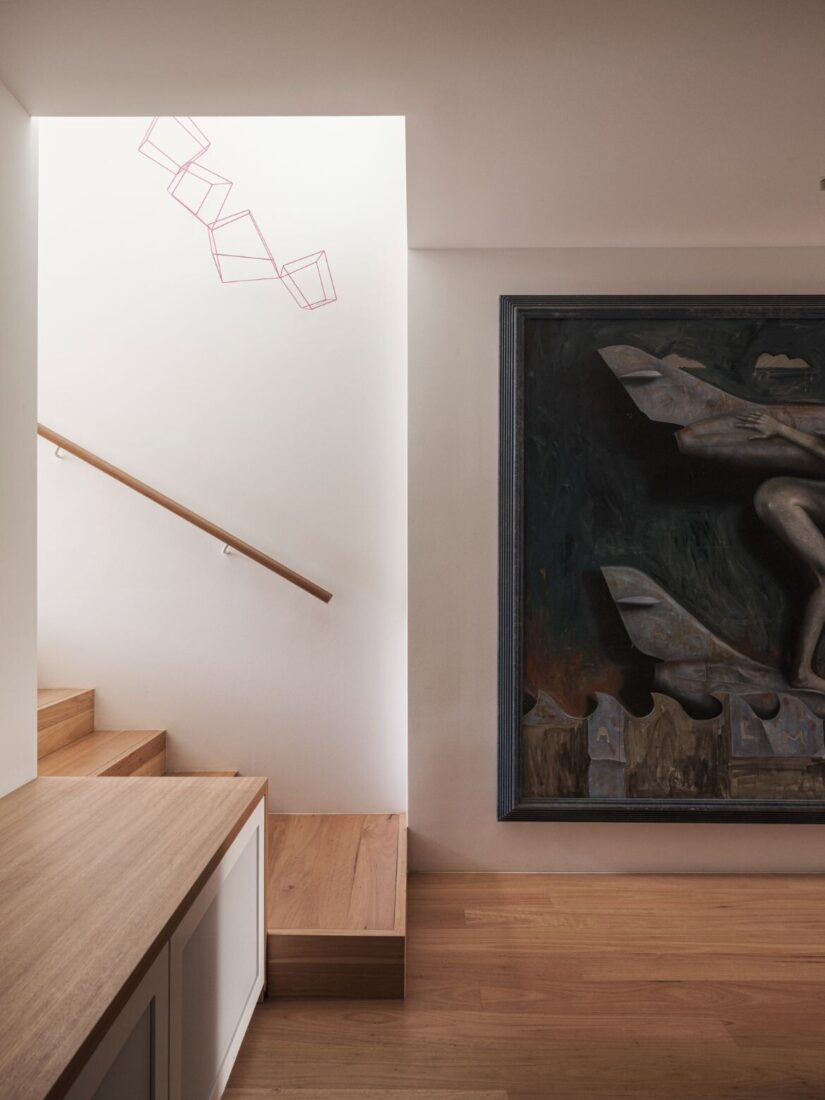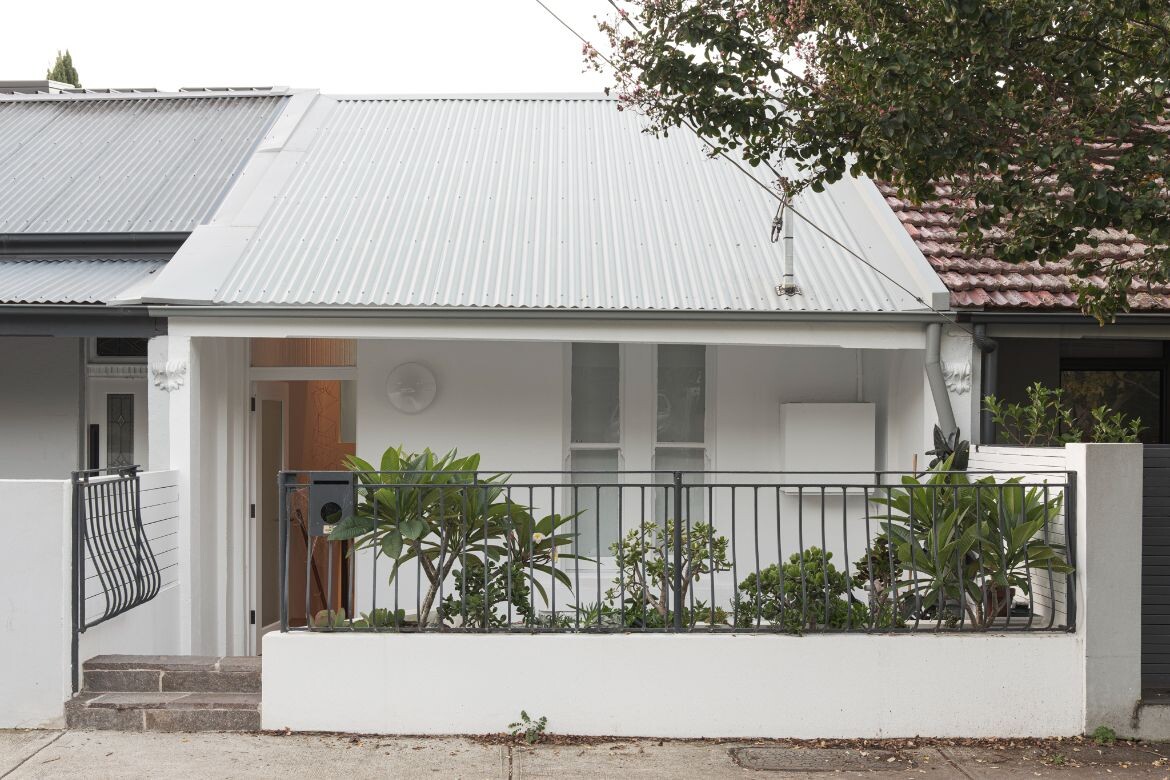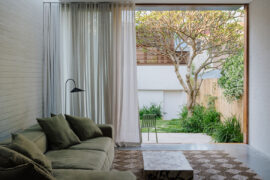Designers continue to find ways of turning narrow terrace houses into dynamic, light-filled and desirable spaces. In Sydney’s Inner West, Ahron Best Architects centred it all on a small void.
29 August 2023
Text by by Timothy Alouani-Roby
Pick up a theory book on Japanese architecture and soon enough you’ll find a sophisticated analysis of how empty space functions as the centre. What does it mean – what does it do spatially – to deliberately place a void in the middle of a building?
It might only be a statement on a small residential scale, but one would do well to ask the question in relation to this terrace home in Australia by Ahron Best Architects. Here, it’s an under-sized and understated void at the heart of the house that nevertheless steals the show and sets the tone for the whole.

The architects have punched a full-height hole through the centre of the property, addressing several needs – both functional and poetic – in one move. The two-storey void is the stairwell, but it’s much more than a point of circulation. With a young maple tree placed in the outdoor space, the inhabitants are invited to move up through the building with a visual connection to nature. The solitary presence of a single tree makes it all the more powerful.
Most importantly, however, the stairwell void achieves light – that ubiquitous problem and most slippery of characters in Australian inner-city terraces. In their often-dilapidated older states, they can quite frankly be dingy, dark and damp. Situated on a north-south axis and in the typically long, narrow plot, the question of bringing light into the centre of the home becomes perhaps the crucial problem for designers seeking to bring new life to these spaces.

Ahron Best Architects has wrapped the stair directly around the glass that holds the void, bringing light from above into the interior and diffusing it through various rooms down to the ground floor. Similarly, this move also achieves significantly improved ventilation. Director Ahron Best explains how it all comes together: “My work is always about this connection to the earth – I always try to ground the building as much as possible.”
“The glass comes all the way down and cuts through the void,” he continues. “I always like to have high-level openings for ventilation. The space gives you a connection to outside that goes beyond just the backyard. It’s a tight site and I think one of the biggest achievements of the project was the amount of floor area we managed to add while still feeling quite open.”

The renovated home now has three bedrooms and bathrooms, with further light being introduced through a small opening at the front of the site. High ceilings towards the rear of the house are the culmination of a series of subtle level changes, moves by which the architects have taken advantage of the site’s slope to delineate certain spaces from others. Material changes in the floor surfaces emphasise this, while a minimal open space running down the side of the living area adds further touches of light and vegetation.
“There’s a journey down the hallway with dramatic areas of light coming in – I think it’s all about that journey through the terrace home,” ponders Best.
Ahron Best Architects
www.ahronbestarchitects.com
Photography by Tom Ferguson
We think you may also like Building porosity in a terrace house














Like what you just read? Similar articles below

Subtle but smart, this Bondi home by Miles/Thorp proves that constraints often lead to the most creative solutions.

Raaga House in Indonesia is as much about reconfiguring the past as it is about shaping the future.